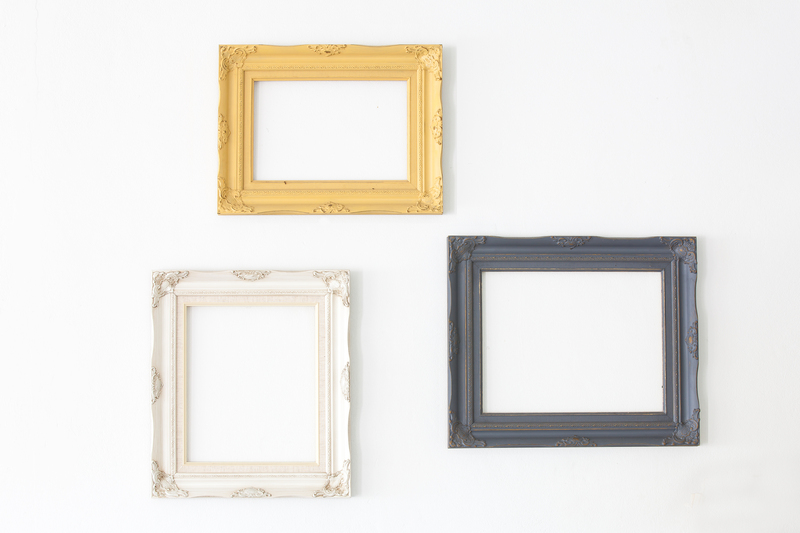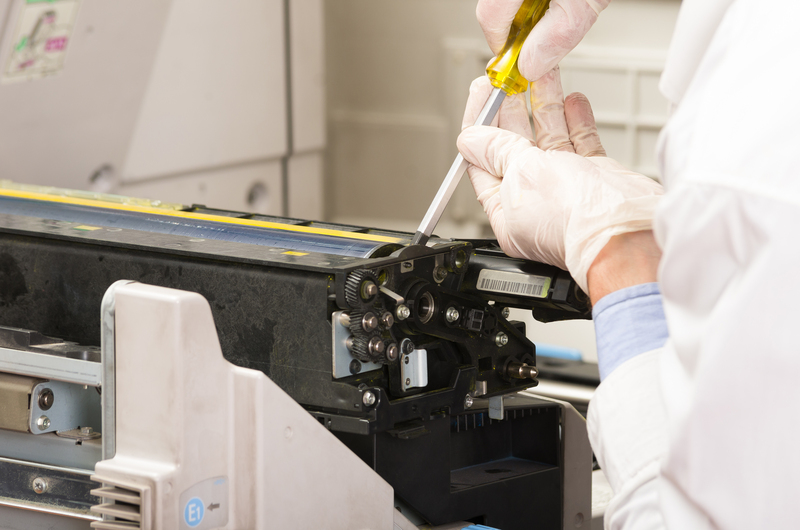The Art of Upcycling: Give Old Items a Second Chance
Upcycling is more than just a trend; it's a sustainable lifestyle movement that encourages creativity, reduces waste, and saves money. Instead of tossing away worn or outdated belongings, upcycling breathes new life into forgotten items, transforming them into useful and beautiful creations. In this article, we'll explore the creative process behind upcycling, offer inspiration for your next project, and highlight the environmental and personal benefits of this remarkable practice.
What Is Upcycling?
Upcycling is the process of taking unwanted, discarded, or old materials and turning them into products that are of higher value or better quality. While recycling involves breaking down materials to create something new, upcycling focuses on creative reuse--finding innovative ways to give objects a "second chance" without extensive reprocessing.
- Repurpose: Give old items a new function.
- Restore: Repair or refresh worn-out objects.
- Reimagine: Use creativity to transform the ordinary into extraordinary.
Why Upcycling Matters: The Environmental Impact
Every year, millions of tons of waste end up in landfills. Much of this waste could be efficiently upcycled, thus reducing the burden on our planet. By incorporating upcycling techniques into our daily lives, we can make a meaningful impact on the environment.
- Less Waste - Keeping materials in use for longer reduces the need for landfill space.
- Lower Carbon Footprint - Manufacturing new products consumes energy and resources. Upcycling requires less energy, resulting in a lower carbon footprint.
- Conserves Resources - Using what you already have preserves raw materials and minimizes extraction.

Exploring the Creative World of Upcycling
One of the greatest appeals of upcycling is the chance to unleash your creativity. With a little imagination, you can turn any item--from old furniture to glass jars--into something unique and functional.
Popular Upcycling Ideas to Try at Home
- Pallet Wood Furniture: Transform shipping pallets into coffee tables, shelves, or outdoor lounges.
- Mason Jar Organizers: Reuse glass jars as kitchen organizers, vases, or bathroom storage.
- Denim Revival: Turn old jeans into tote bags, pillow covers, or rugged aprons.
- Bottle Art: Upcycle plastic or glass bottles as vases, lamps, or planters.
- Vintage Suitcase Tables: Convert old suitcases into quirky side tables or pet beds.
The possibilities are endless--every unused item holds the potential for a creative transformation!
How to Get Started with Upcycling Projects
If you haven't tried upcycling before, don't worry; you don't need to be a professional artist or carpenter. Here's a simple guide to help beginners embark on their journey into the art of upcycling:
- Identify: Look around your home for unused items that could serve a new purpose.
- Plan: Visualize what the item could become. Search online for inspiration and tutorials.
- Gather Tools: Basic supplies like paint, glue, screws, sandpaper, or a sewing kit can help you get started.
- Experiment: Don't be afraid to try different techniques and see what works best for your item.
- Share: Showcase your creations with friends or on social media to inspire others to join the upcycling movement.
The Benefits of Creative Reuse
Upcycling isn't just good for the environment--it can also have significant personal benefits.
Boosts Creativity and Innovation
When you give old items a second chance, you flex your problem-solving muscles. Turning something obsolete into something useful or beautiful ignites innovative thinking and helps you see value in unexpected places.
Promotes Mindfulness and Well-being
Working on upcycling projects can be meditative and rewarding. Taking time away from screens, focusing on a hands-on project, and seeing tangible results can enhance your mood and improve mental clarity. Whether it's painting an old chair or sewing patches onto jeans, the process itself is calming and satisfying.
Saves Money and Resources
Upcycling conserves your budget by using what you already have. Whether furnishing your home with DIY decor, making your own gifts, or reorganizing spaces using upcycled containers, the savings add up--without compromising style or functionality.
Transforming Trash into Treasure: Upcycling Success Stories
Across the globe, individuals and communities are embracing the art of upcycling in inspiring ways. Here are a few real-life examples of how creative reuse is making a difference:
Community Furniture Banks
Many cities support furniture banks that repair and upcycle donated sofas, chairs, and tables for families in need. By equipping households with affordable, attractive furnishings, these organizations promote sustainability and social welfare.
Artists and Designers
Some innovative artists have made entire careers out of upcycled works. From metal sculptures crafted from machinery parts to haute couture dresses made from plastic bags, the world of art and fashion is replete with upcycling inspirations.
Urban Gardening
Community gardens worldwide use repurposed containers--like tires, buckets, or pallets--for growing vegetables and flowers. These projects provide fresh produce, beautify neighborhoods, and showcase the creative potential of discarded materials.
How to Upcycle Different Materials
Each type of material offers unique opportunities for upcycling. Here's how to approach some common household items:
Wood
- Sand and paint old furniture for a fresh look.
- Combine scraps to create shelving or decorative wall art.
- Use pallets or crates to build storage solutions or garden planters.
Glass
- Transform bottles into elegant vases or lamps.
- Use jars as reusable storage in the kitchen, bathroom, or garage.
- Make mosaic tiles from broken glass for art projects.
Textiles
- Patch old clothes into quilts or tote bags.
- Use fabric scraps to make coasters, rugs, or dog toys.
- Repurpose t-shirts into cleaning cloths or produce bags.
Metal
- Turn tin cans into lamps, flower pots, or pencil holders.
- Repurpose cutlery or hardware as unique hooks or wall art.
- Use reclaimed metal in outdoor sculptures or garden features.
Sourcing Materials for Upcycling Projects
Where do you find items to upcycle? Start by exploring your home for forgotten belongings. If you're looking for larger materials, consider the following sources:
- Thrift Stores: A treasure trove of unique items with upcycling potential.
- Yard Sales: Find furniture, textiles, and more at bargain prices.
- Freecycle and Online Marketplaces: Check local communities for free or low-cost materials.
- Construction Sites: Many building projects offer scrap wood or pallets for free.
- Friends and Family: Ask loved ones if they're giving away anything that could be repurposed.
Upcycling for Beginners: Tips for Success
Starting out in upcycling can seem overwhelming, but these tips can help you begin your creative journey:
- Start Small: Choose simple projects like upcycled jars or tin can planters to build confidence.
- Follow Tutorials: There are countless online videos and guides tailored for beginners.
- Don't Fear Mistakes: Upcycling is about experimentation and learning as you go.
- Use Non-Toxic Materials: Prioritize your safety, especially when working with paints, adhesives, or finishes.
- Give It Your Unique Touch: Add decorative flair, colors, and patterns to make each project your own.
Upcycling vs. Recycling: What's the Difference?
It's common to confuse upcycling with recycling, but they serve distinct roles in reducing waste:
- Recycling: Breaks down materials--such as plastic, paper, or metal--to be remanufactured into new products. This process often uses additional energy and separates the material from its original form.
- Upcycling: Adds value by creatively reusing objects in their current form, reducing processing and energy needs. You get to enjoy the unique character and history of each upcycled piece.

Upcycling as a Lifestyle: How to Make It a Habit
Making upcycling a part of your everyday routine is a rewarding way to contribute to sustainability. Here are meaningful ways to weave it into your lifestyle:
Adopt the Upcycler's Mindset
Whenever you're about to dispose of something, pause and ask: "Could this be given a second chance?" By making a habit of creative reuse, you'll find inspiration in the most unexpected places.
Engage Your Family and Community
Host upcycling workshops or family craft days to share techniques and brainstorm creative ideas. This not only brings people together but spreads the message of sustainability far and wide.
Shop with Upcycling in Mind
When buying new items, consider their potential for future upcycling. Durable, well-made goods often have the best "upcycling value" when their original use comes to an end.
Conclusion: Embrace the Joy of Upcycling
The art of upcycling is a joyful and practical path toward sustainability, resourcefulness, and self-expression. By giving old items a second chance, you reduce waste, save money, and discover the true value of creativity. Embrace the upcycling lifestyle, and be amazed by the treasures you can create from the things you already own. The next time you're tempted to throw something away, remember: its second chance may be just a creative spark away.